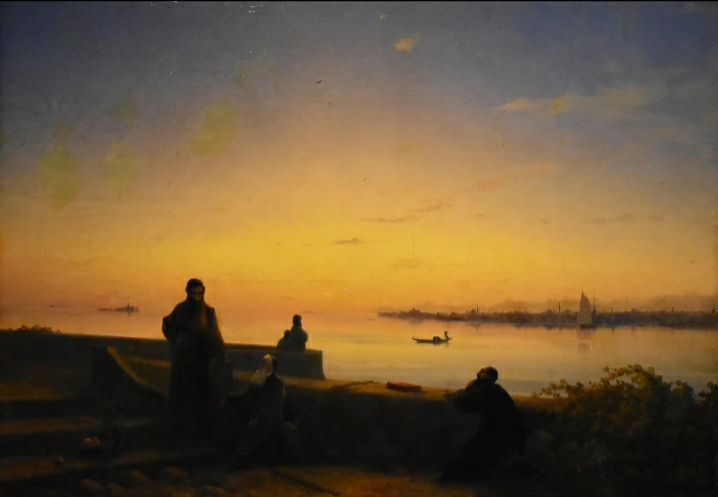Born to a mixed-race family in rural Georgia, Benny Andrews rose from impoverished conditions and the anti-Black discrimination of the Jim Crow South to become a leading figurative painter of American life and a social justice advocate. He learned to draw as a child from his father, a self-taught artist and sharecropper. After serving in the Korean War, Andrews studied painting at the School of the Art Institute of Chicago, using funds from the GI Bill, and moved to New York in 1958. There, he befriended a group of artists exploring figuration, including Red Grooms and Alice Neel, and developed his signature technique of "rough collage," combining bits of paper and fabric onto his painted canvases.
This startling and satirical scene of a patriotic woman astride a nude soldier forms part of Andrews’ ambitious Bicentennial Series, begun in 1970 in response to the 200th anniversary of the Declaration of Independence. The painting cycle combines a potent confrontation of racial inequities with a critique of unguarded patriotism. Andrews created this particular work in response to the Vietnam War, saying that it represented a powerful image of "the military being used by misguided citizenry." It depicts a woman clutching a miniature American flag as she straddles a gaunt figure clad only in boots, a helmet, and the insignia of a US Army sergeant. Here, the military—represented by the helmeted form—submits to the will of "the people"—the patriotic woman. Crushed under the weight of jingoistic fervor, the person on its hands and knees turns this anti-war allegory into a scene of sexual domination and submission.
American Gothic takes its name from a more famous painting by Grant Wood that hangs at the Art Institute of Chicago, where Andrews would have seen it. While that work represents a farmer and his daughter stiffly posed in front of their house and has been interpreted as a positive depiction of Midwestern spirit, Andrews portrays a similarly enigmatic but more skeptical view of American values. The main figures also bear an unexpected resemblance to depictions of Aristotle and Phyllis, a moral tale of the Medieval period in which the ancient Greek philosopher debases himself before the seductive mistress of Alexander the Great, allowing her to ride him like a horse. Though the story has no relation to this painting’s contemporary anti-war message, it provides a powerful basis for the figurative group at the center of American Gothic.
The met.



































